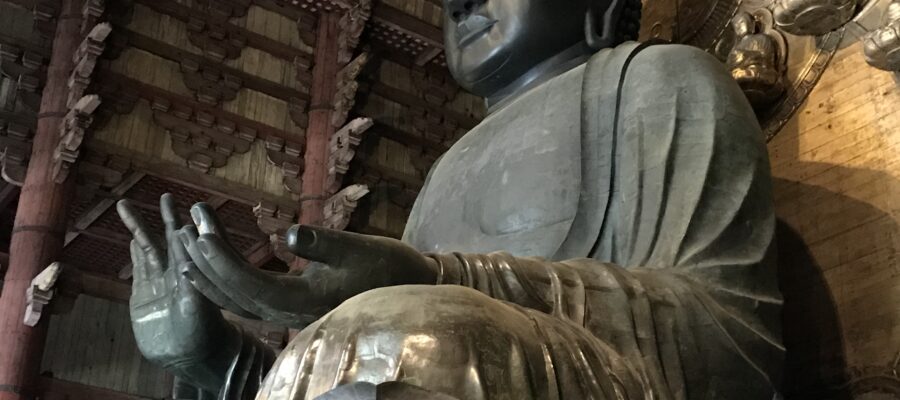東大寺に来る理由
東大寺に来る理由は、大仏に会うため。その一言に尽きるでしょう。私も何度も、海外からの研修生を連れて訪問しました。もちろん、大仏様を見ていただくためです。大仏殿に入って、正面で相対する大仏像は、いつ見ても大きくて立派です。石像やコンクリートの仏像で大きいものは沢山ありますが、銅を主成分とする鋳造の大仏としては世界最大級ではないでしょうか。
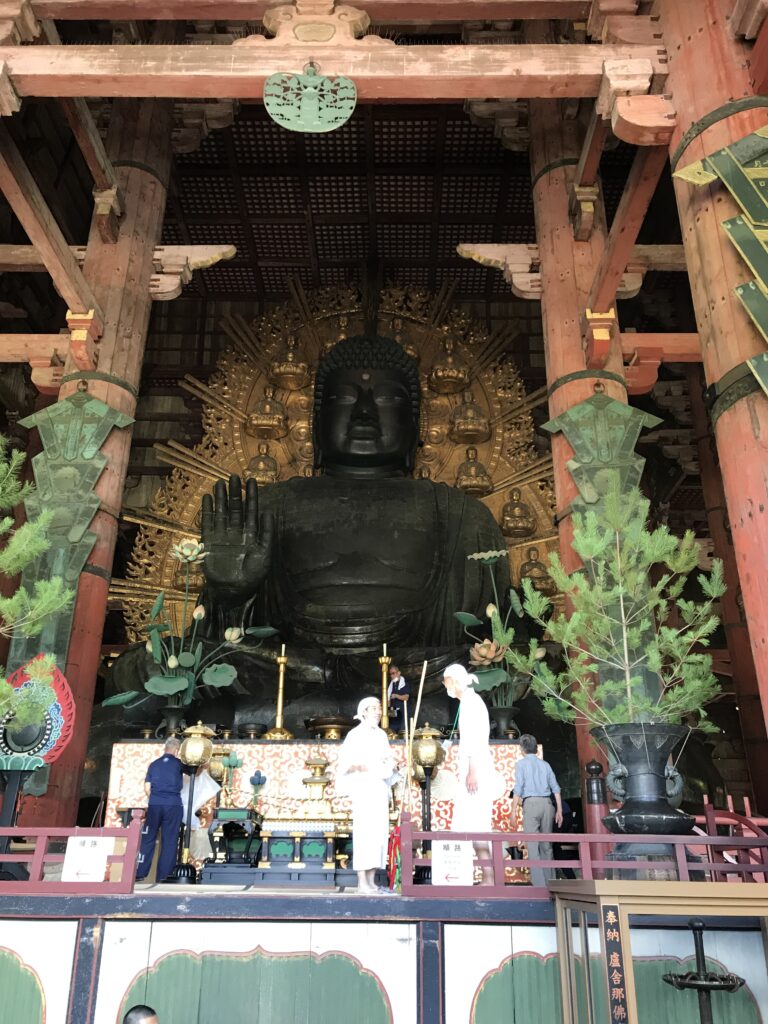
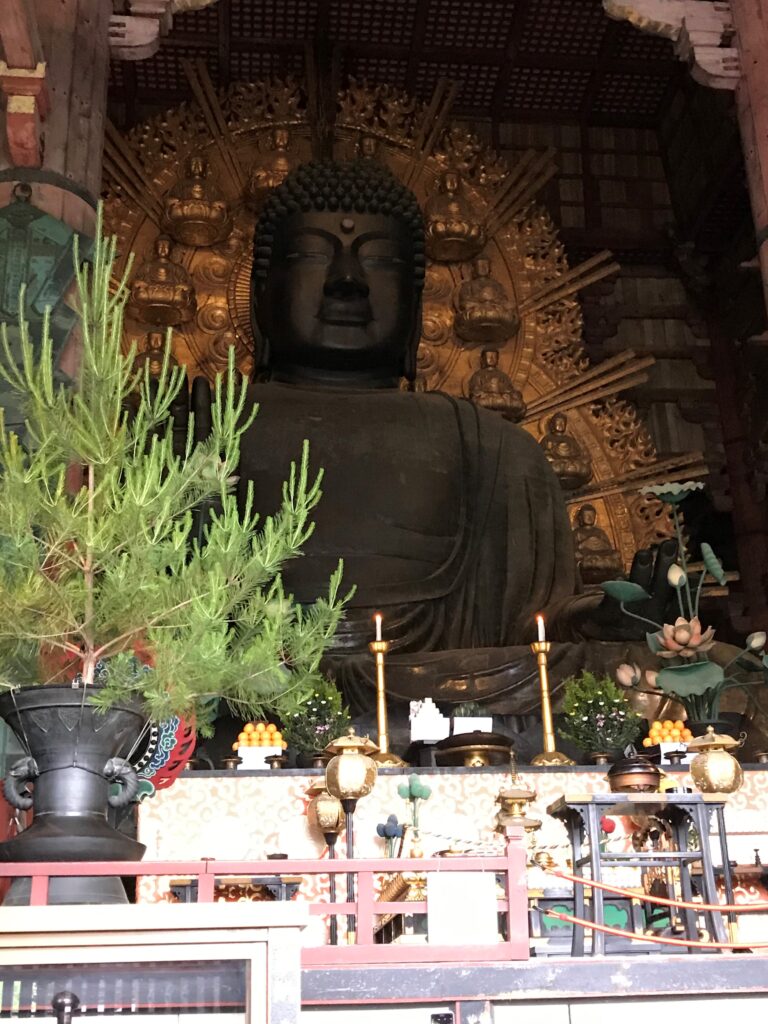
大仏様の台座の下には、蓮の花びらに施したレリーフのレプリカが展示してあります。その一枚一枚に線刻画により、世界観を表しています。ここまで真剣に見ている人は少ないです。とにかく大仏様に圧倒されている方が多いようです。
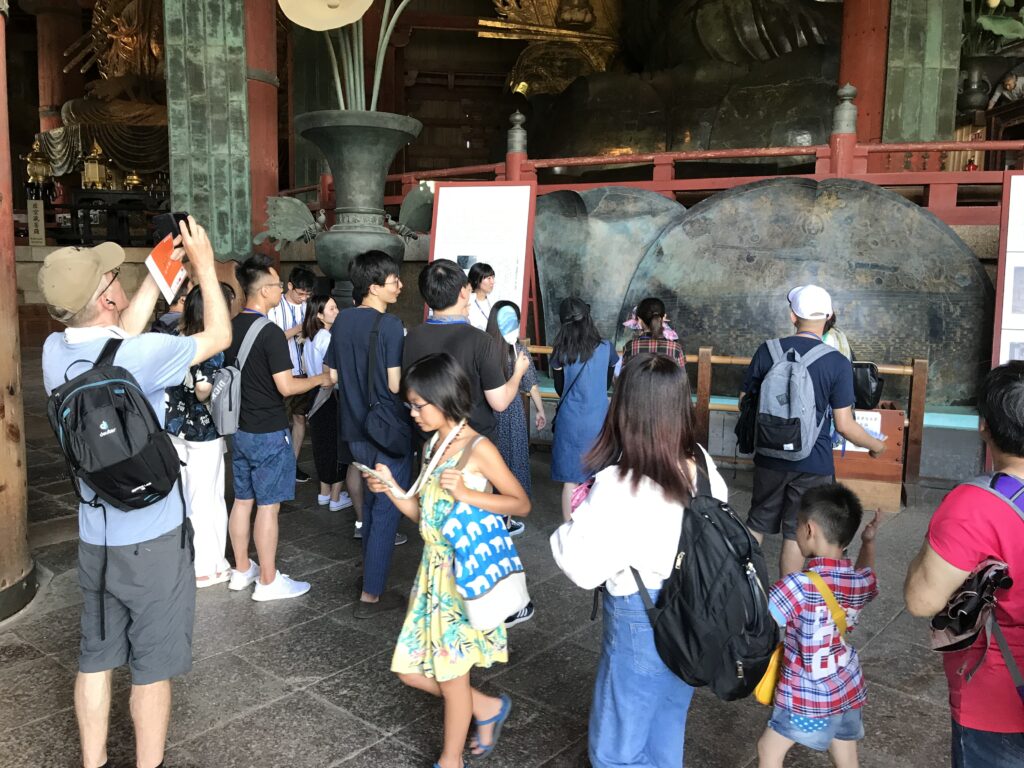
お身ぬぐいに遭遇
何回も通っているので、大仏様のほこりを落とす「お身ぬぐい」の日に遭遇したことがあります。皆さん白い作業着を着て、頭も白い布でほっかむりを被った姿で、大仏像に登って埃を落としています。この作業をする方にとっては、非常に名誉なことで、ご家族も当日、その雄姿を見るために、来られるそうです。
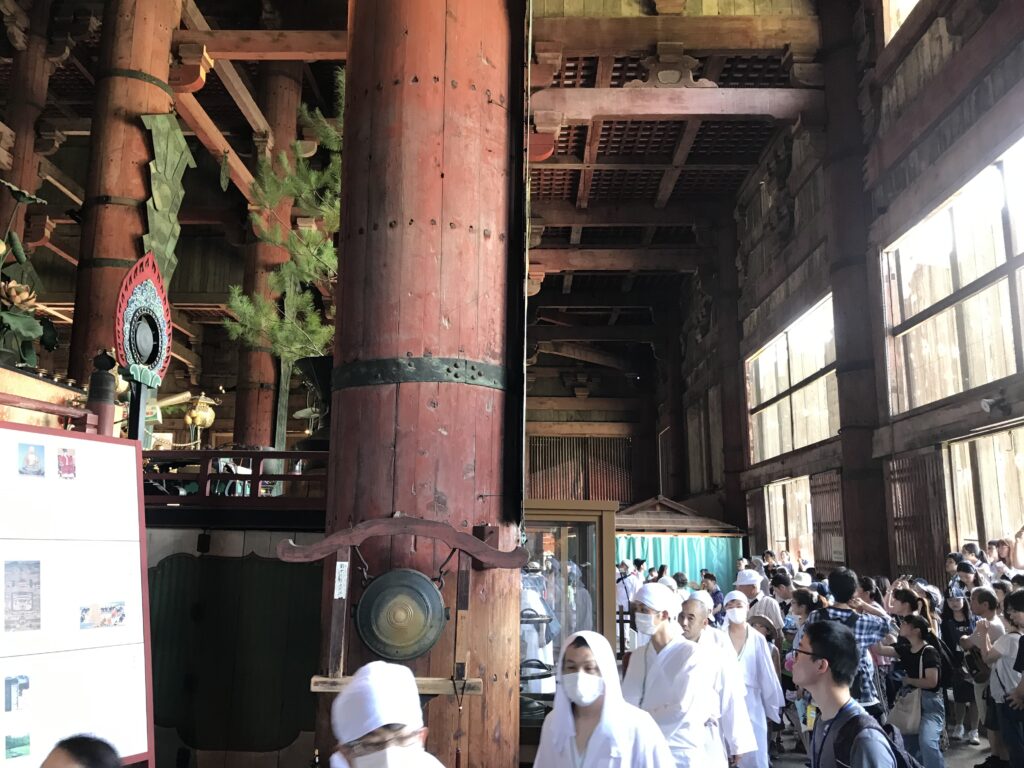
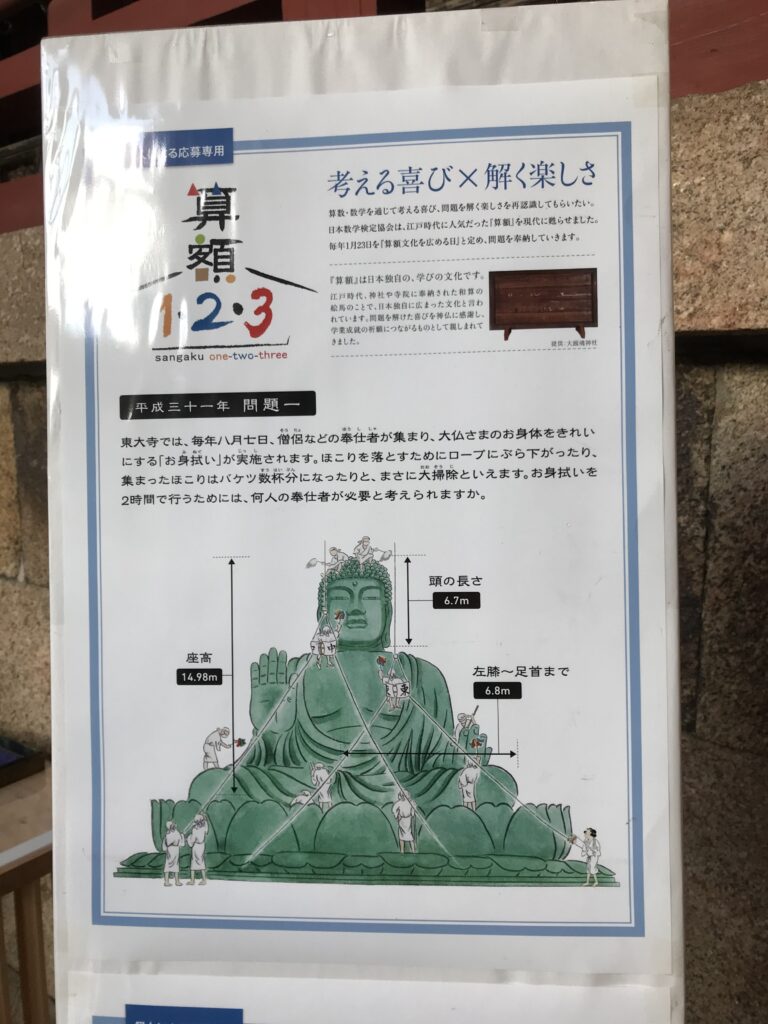
大仏様が結ぶ印
さて、通訳ガイドの方でしたら、大仏様が結ばれている印について、説明される時もありますよね。右手は施無畏印(せむいいん)で、怖がらなくていいですよという意味。ありていに言えば、よく来たね!と歓迎してくれています。左手は与願印(よがんいん)で、願いを聞いてあげましょう。と言ってくれています。ここはお言葉に甘えて、お願いをしてみましょう。私も毎回、お願いをしています。
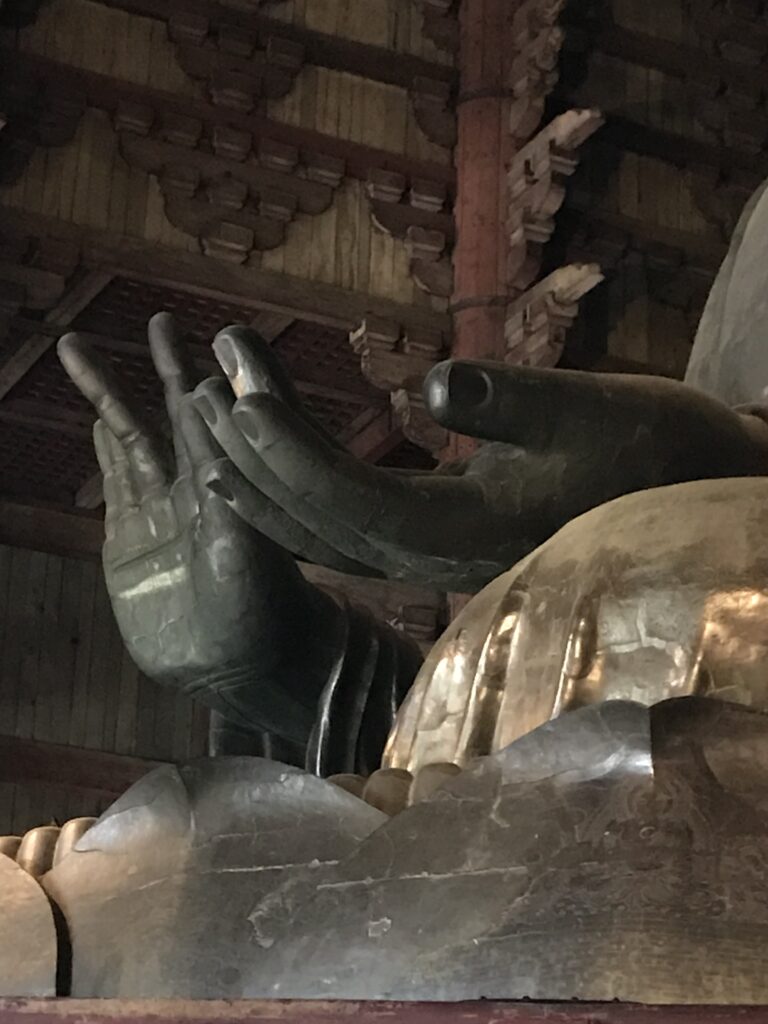
左足に残る金蒸着の跡
大仏の像を反時計回りに一周してくると、大仏の左側面に来ます。ガイドさんによっては、ここを写真ポイントとして、訪問客に記念撮影を薦めている方もいらっしゃいます。混雑も緩和しているエリアですので、私もお薦めします。以前、中学生を引率していたガイドさんが、大仏ができたころの金が残っているところが、左の足の部分と話しているのを聞いたことがあります。確かに左手の下の部分は金色の光沢があり、この部分は創建当時の金属が残っていると言われています。ただ、2度の再建や、修理も数多く行っていて、金の蒸着も当初だけではないでしょうから、少し疑問を感じました。それでも、全身を金蒸着された大仏様の姿を一度でも目にしたかったと思います。誰かがお金を出して、金閣寺のように神々しい金色に輝く大仏様を復活してくれないかな、見るたびにいつも思います。(つづく)
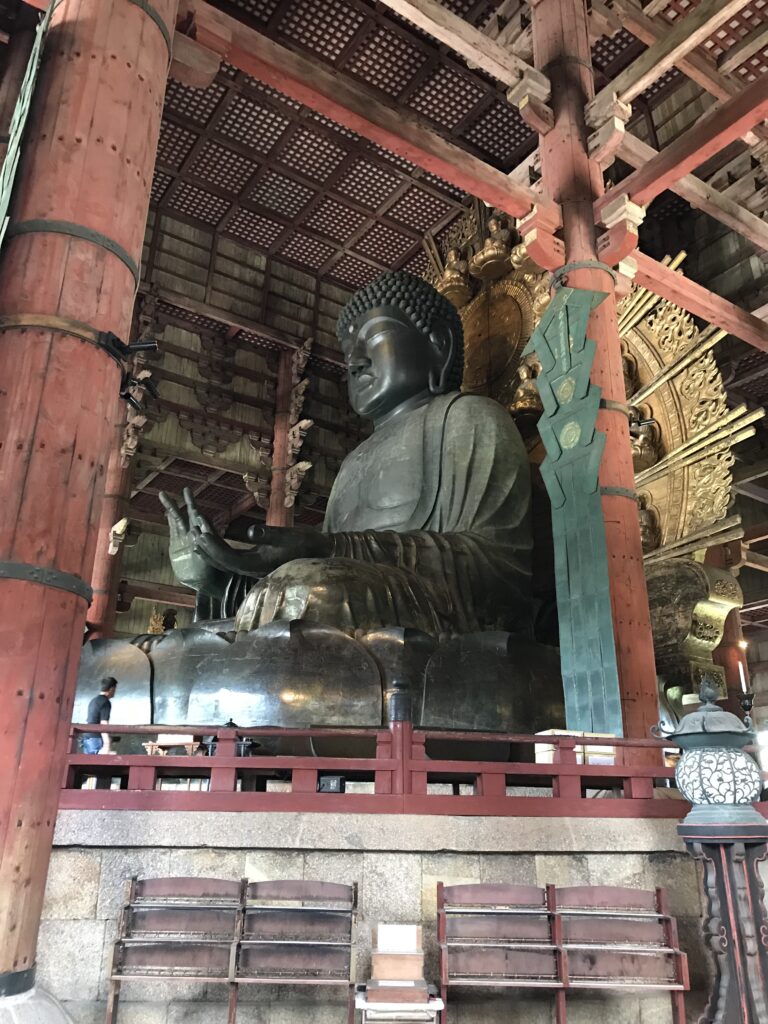
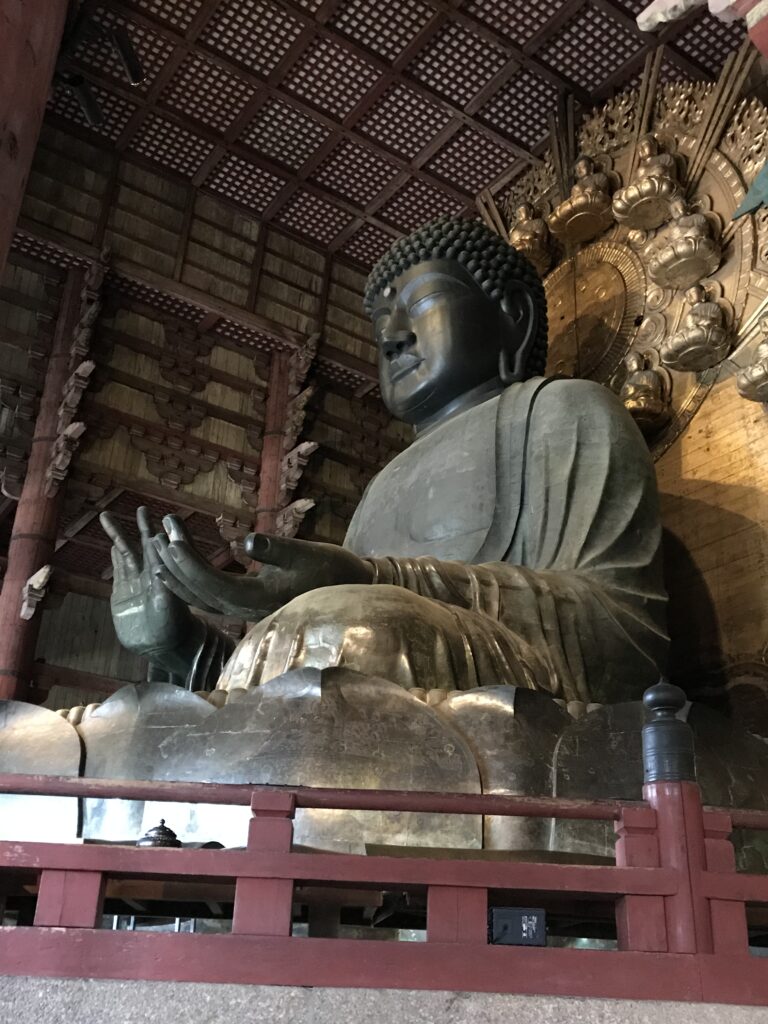
大仏像を紹介している書籍
志村史夫さんの「古代日本の超技術」にて、創建時の大仏像の銅がどこから来たのかを紹介しています。
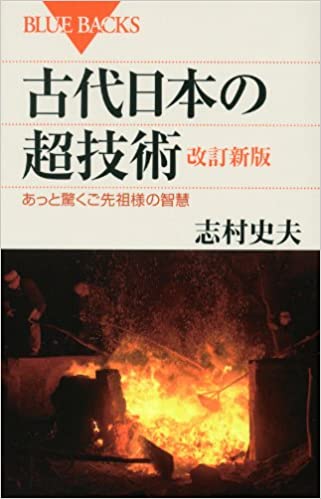
古代日本の超技術 改訂新版 (ブルーバックス) [ 志村 史夫 ]
価格:1,100円
(2021/5/5 10:49時点)
感想(1件)
Todaiji Temple (4) Great Buddha statue (English)
Why Come to Todaiji?
The reason to come to Todaiji Temple is to see the Great Buddha Statue. That’s all there is to it. I have visited the temple many times with trainees from overseas. Of course, it was to see the Great Buddha. When you enter the Daibutsuden (Great Buddha Hall), the statue of the Great Buddha in front of you is always large and magnificent. There are many large stone and concrete statues of Buddha, but this is probably one of the world’s largest statues of the Great Buddha made of cast copper.
Underneath the pedestal of the Great Buddha, there is a replica of a relief applied to the petals of a lotus flower. Each one of them represents a view of the world through line engraving. There are not many people who look at it seriously. Anyway, it seems that many people are overwhelmed by the Great Buddha.
Encountering the body washing of the Great Buddha
Since I have been to the temple many times, I have encountered the day of the “Omi-nugui,” the dusting off of the Great Buddha. Everyone is dressed in white work clothes and their heads are also covered with a white cloth and they climb up to the statue of the Great Buddha to remove the dust. It is a great honor for the people who do this work, and their families come to see them on the day.
A sign tied by the Great Buddha
Now, if you are an interpreter guide, you may be asked to explain about the marks that the Great Buddha has tied. The right hand is the “semui-in,” which means “don’t be afraid. To put it bluntly, it says, “Welcome to the world! The left hand is the Yoganin, which means “I’ll listen to your wishes.” Let’s take his word for it and make a wish. I also make a wish every time.
Gold Vapor Deposition marks on the left foot.
As you come around the statue of the Great Buddha in a counterclockwise direction, you will come to the left side of the statue. Some guides recommend visitors to take pictures here as a photo point. I also recommend this area as it is less crowded. I once heard a guide who was leading a group of junior high school students say that the part of the Daibutsu that still has the gold from when it was made is the left leg. Indeed, the lower part of the left leg has a golden luster, and it is said that this part still has the metal from when it was built. However, I had some doubts because the temple has been rebuilt twice and many repairs have been made, and the gold deposition would not have been done only at the beginning. Still, I would have liked to have seen the Great Buddha with his entire body covered in gold vapor deposition, even if only once. Every time I see it, I always wonder if someone will pay to bring back the Great Buddha in a divine golden glow like the Golden Pavilion. (To be continued)
Temple Todaiji (4) Statue du Grand Bouddha (Français)
Pourquoi venir à Todaiji ?
La raison de venir au temple Todaiji est de voir la statue du Grand Bouddha. C’est tout ce qu’il y a à faire. J’ai visité le temple de nombreuses fois avec des stagiaires étrangers. Bien sûr, c’était pour voir le Grand Bouddha. Lorsque vous entrez dans le Daibutsuden (salle du Grand Bouddha), la statue du Grand Bouddha qui se trouve devant vous est toujours grande et magnifique. Il existe de nombreuses grandes statues de Bouddha en pierre ou en béton, mais celle-ci est probablement l’une des plus grandes statues de Bouddha au monde, réalisée en cuivre moulé.
Sous le piédestal du Grand Bouddha, se trouve la réplique d’un relief appliqué aux pétales d’une fleur de lotus. Chacun d’entre eux représente une vision du monde à travers une gravure au trait. Il n’y a pas beaucoup de gens qui le regardent sérieusement. Quoi qu’il en soit, il semble que de nombreuses personnes soient subjuguées par le Grand Bouddha.
La rencontre avec le lavage du corps du Grand Bouddha
Depuis que je suis allé au temple à plusieurs reprises, j’ai rencontré le jour de l'”Omi-nugui”, le dépoussiérage du Grand Bouddha. Tout le monde est habillé de vêtements de travail blancs et leur tête est également couverte d’un tissu blanc et ils montent jusqu’à la statue du Grand Bouddha pour enlever la poussière. C’est un grand honneur pour les personnes qui font ce travail, et leurs familles viennent les voir ce jour-là.
Un signe attaché par le Grand Bouddha
Maintenant, si vous êtes un guide interprète, on peut vous demander d’expliquer les marques que le Grand Bouddha a attachées. La main droite est le “semui-in”, qui signifie “n’ayez pas peur”. Pour dire les choses crûment, cela signifie “Bienvenue dans le monde ! La main gauche est le “Yoganin”, qui signifie “J’écouterai vos souhaits”. Prenons-le au mot et faisons un vœu. Je fais aussi un vœu à chaque fois.
Marques de dépôt de vapeur d’or sur le pied gauche.
En contournant la statue du Grand Bouddha dans le sens inverse des aiguilles d’une montre, vous arriverez sur le côté gauche de la statue. Certains guides recommandent aux visiteurs de prendre des photos ici, en tant que point photo. Je recommande également cette zone car elle est moins fréquentée. J’ai entendu un jour un guide qui dirigeait un groupe d’élèves de collège dire que la partie du Daibutsu qui a encore l’or de l’époque de sa fabrication est la jambe gauche. En effet, la partie inférieure de la jambe gauche a un éclat doré, et on dit que cette partie a encore le métal de l’époque de sa construction. Cependant, j’avais quelques doutes car le temple a été reconstruit deux fois et de nombreuses réparations ont été effectuées, et le dépôt d’or n’aurait pas été fait seulement au début. Malgré tout, j’aurais aimé voir le Grand Bouddha avec tout son corps recouvert d’un dépôt de vapeur d’or, ne serait-ce qu’une fois. Chaque fois que je le vois, je me demande toujours si quelqu’un va payer pour ramener le Grand Bouddha dans un éclat doré divin comme le Pavillon d’or. (A suivre)
